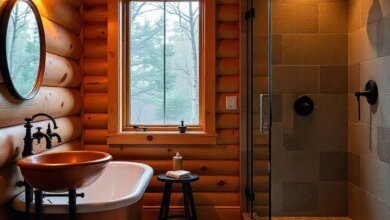How to Install a DIY Multi-Zone Condenser the Right Way
DIY Multi-Zone Condenser the Right Way
Setting up a DIY Multi-Zone Condenser might sound like a big job. But with the right steps, tools, and planning, you can get it done smoothly. This guide walks you through everything you need to know. From basic planning to final setup, it keeps the process practical and beginner-friendly. Whether you are replacing an old system or building from scratch, this post is built to help.
What is a DIY Multi-Zone Condenser?
A DIY Multi-Zone Condenser is part of a ductless mini-split HVAC system. It connects with two or more indoor air handlers. This lets you control the temperature in different rooms. It works well for homes where ductwork is not possible or ideal.
Unlike single-zone units, multi-zone condensers allow for separate temperature settings in each zone. That means more comfort and better energy control.
Why Choose a DIY Multi-Zone Condenser?
You might be asking why a DIY system is worth your time. Here are some key reasons:
- Lower Installation Costs
You skip labor fees by doing the job yourself. - Energy Efficiency
You only heat or cool the rooms you use. - Custom Temperature Control
Each room gets its climate setting. - Easy Upgrades
You can expand your system later by adding more zones.
Most importantly, it gives homeowners more flexibility and control without hiring expensive contractors.
Tools You Will Need
Before starting, gather these essential tools:
- Vacuum pump
- Torque wrench
- Level
- Drill with bits
- Hole saw
- Screwdrivers
- Flaring tool
- Electrical tape
- Refrigerant line set
Having everything ready saves time and reduces the risk of mistakes during setup.
Planning Your Zones
Start with a layout. Identify which rooms need individual climate control. This planning step helps you:
- Pick the right size unit
- Avoid overloading the condenser
- Choose proper line lengths
- Place indoor units in the best spots
Use a zone map or a simple sketch to guide your plan.
Step-by-Step Installation Guide
1. Mount Indoor Units
Pick a spot on an interior wall. Make sure there’s access for tubing and wires.
- Attach the mounting plate securely
- Drill a hole for the line set
- Run the lines and wiring through the hole
Keep the units at least 6 inches below the ceiling and 6 feet above the floor for best airflow.
2. Install the Condenser
Place it on a solid surface outside. It should be away from direct sunlight and heavy foot traffic. Leave at least 12 inches of clearance on all sides.
- Use anti-vibration pads under the base
- Anchor it with bolts for safety
- Connect the line sets to indoor units
3. Connect Refrigerant Lines
Use a torque wrench to tighten the flared connections. Always follow the specs in your user manual. Over-tightening can damage the joints.
- Apply refrigerant oil to flare nuts
- Wrap joints with insulation and tape
- Check for leaks using a vacuum pump
4. Electrical Wiring
Follow your system’s wiring diagram closely. Always turn off the main power before starting.
- Connect the indoor units to the outdoor unit
- Secure wires with clips
- Double-check voltage and fuse ratings
5. Vacuum and Pressure Test
This is crucial. It removes moisture and air from the system before charging.
- Use a vacuum pump to draw down the system
- Let it hold for 15 to 30 minutes
- Watch for pressure drops
If the system holds steady, you are good to go.
6. Start the System
Turn the power back on. Use the remote to set different temperatures in each room.
Watch each unit start up. If everything runs quietly and cools properly, your job is complete.
Maintenance Tips for Long-Term Performance
- Clean filters every 30 days
- Check refrigerant levels once a year
- Remove dirt or debris from the condenser
- Inspect wiring and tighten connections
Routine checks keep your system running smoothly and help avoid bigger issues later.
Common Mistakes to Avoid
Even seasoned DIYers can make a few missteps. Look out for:
- Ignoring torque specs during installation
- Forgetting to check for leaks
- Placing the condenser on an unstable surface
- Failing to insulate line sets
A careful approach saves time and protects your system from damage.
When to Call a Professional
Sometimes it’s safer to bring in help. If you:
- Struggle with electrical work
- Can’t pass the vacuum test
- Notice leaks after startup
It’s better to pause and get expert support. It costs more, but it prevents long-term damage or safety risks.
Final Thoughts
Setting up your own DIY Multi-Zone Condenser can be a smart move. You save money and take control of your comfort. As long as you plan well and follow the correct steps, the process stays manageable and safe. Always read your user manual and take safety seriously.
Take full control of your comfort and energy savings today. Install your DIY Multi-Zone Condenser with confidence using this complete guide. Get started and feel the difference.




